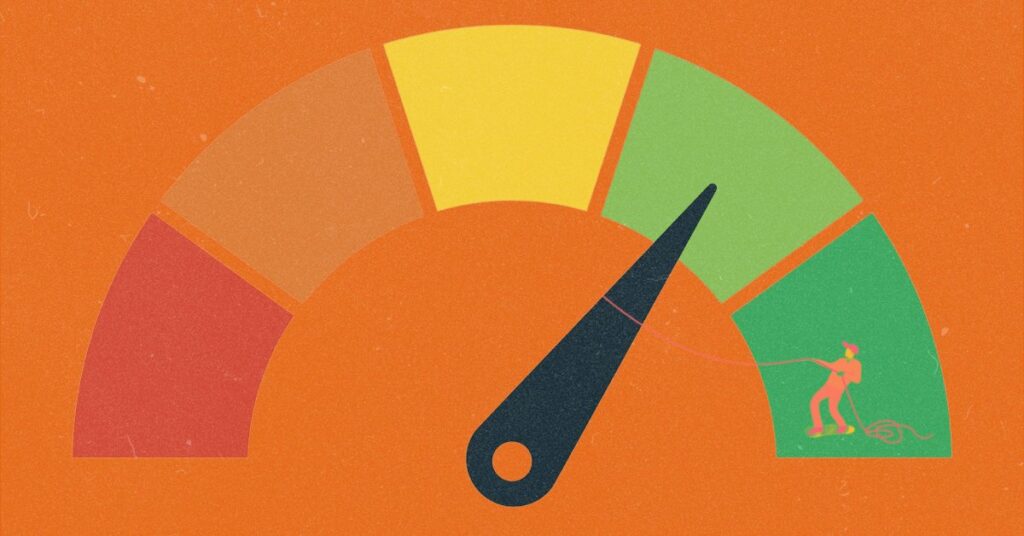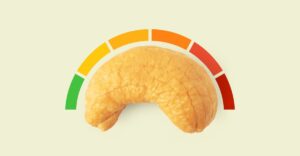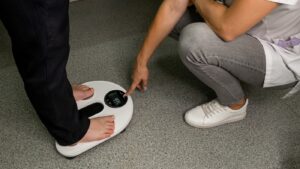The Least Amount of Exercise You Can Get Away With Doing

[ad_1]
A few years ago, personal trainer Anna Maltby cut back on exercise as she juggled work with being a new mother. Like some of her clients, she suddenly lacked the time and energy to work out the way she used to. She could manage no more than several 15-minute workouts per week, “but I actually felt like I got my minimum effective dose for that stage of my life,” she says.
Many of us feel like we’re too busy for exercise. Others actively avoid it. But research shows that doing at least some exercise is important for longer, healthier lives without dementia, heart disease, diabetes, or cancer. Other advantages are reaped right away: we’re happier and more energetic on a daily basis.
So, just how little exercise can you get away with, while still getting these benefits? Here’s how low you can go, according to experts. Getting there may require changing how we define exercise in the first place.
Meet the minimum guidelines
Official guidelines from the World Health Organization, the U.S. government, and other groups give adults a few choices for how low they can go with aerobic physical activity on a weekly basis. One option is getting at least 75 to 150 minutes of “vigorous” activity, meaning your level of huffing and puffing makes conversation difficult, and your heart rate rises to about 80% of its peak. Another option takes longer, but it’s less intense: 150 to 300 minutes of “moderate” activity, at 60-70% of your maximum heart rate.
You could also combine just enough vigorous and moderate exercise so they add up to the weekly minimum. Because tougher workouts are especially health-giving, they count more toward your weekly goal; every minute of vigorous activity is equivalent to two minutes of moderate activity. (This means that if you got 50 minutes of vigorous activity, that would count 100 minutes toward the 150-minute requirement for moderate activity. Then, you’d only need to add 50 minutes of moderate activity to meet your weekly minimum.)
Read More: Your Brain Doesn’t Want You to Exercise
These bare-minimum amounts deliver the biggest rewards for the fewest drops of sweat, according to decades of research. “If you look at the statistical curve, the increase in benefits is most dramatic” when these minimums are achieved, says Regina Guthold, an epidemiologist at the WHO. If you go higher—over 300 minutes of moderate exercise, for example—you’ll keep accruing greater health, but the gains become smaller.
Similar thresholds also support mental health, says Mary de Groot, a psychologist and associate professor of medicine at Indiana University School of Medicine. In a study with more than one million people, those who exercised 120 to 360 minutes per week had the best mental health, compared to those who did more or less.
Save time with hybrid workouts
But here’s the catch: On top of cardio, strength training is a must, no less than twice per week. If you neglect it, some unsavory effects of older age may await you, like muscle atrophy and osteoporosis.
Now, the time-saving loophole: strength training can be mixed into cardio sessions. By using your own body weight as resistance (instead of heavier barbells), you can do more repetitions, upping your heart rate along with building muscle. Seniors in particular should focus on this “multicomponent activity,” the guidelines say, including moves that improve balance to help reduce the risk of falls.
Cardio-strength workouts include pushups, Turkish get-ups, mountain climbers, burpees, air squats, and lunges. With this hybrid approach, you could still wrap up exercise for the week in as few as 75 minutes.
Skip days, not months
Work gets busy; parenthood, vacations, and colds disrupt routines. We often need to skip exercise for several days in a row. (After all, we’re only human—not exercise robots.) So, how do the weekly minimums translate into everyday life? Must we bust a move every single day or face imminent demise?
Thankfully, no, Guthold says, as long as you catch up later in the week. “Weekend warriors get the same benefits as those who are active every day for less time,” she says. “There’s no evidence it needs to be spread out.”
How about if you skip a week or two at a time? Well, if you reach the minimum amount of physical activity for only, say, three out of every four weeks, that’s much better than never reaching it. “It’s normal for people to have highs and lows with physical activity, even if they love it,” adds Stella Volpe, a professor of exercise and nutrition at Virginia Tech and president of the American College of Sports Medicine, another influential organization that publishes activity guidelines.
Read More: How to Get Back to Sleep After Waking Up at Night
“Life happens,” says Katrina Piercy, an exercise physiologist at HHS who leads development of the Physical Activity Guidelines for Americans. “But if you’re working toward meeting the guidelines in a typical week, you’re going to see benefits.”
Even on your off-weeks, just five minutes of activity per day will send more blood pumping through the body, which supports health by preventing blood vessels from stiffening. It could also improve blood sugar and sleep quality, Piercy says. But the more weeks that pass without meeting the guidelines, the more your health may eventually suffer, notes Volpe. Just two weeks straight being very sedentary causes aerobic fitness and muscle mass to decline significantly, potentially paving the way for disease.
Combine exercise with movement breaks
Stay still for over an hour, and your feet may start tingling as the blood pools there, compelling you to get up and stretch. This light movement is important, but for most people, it’s not taxing enough to count toward their weekly exercise minimum. So here’s another way to save time on exercise: use these breaks to get your heart rate up so it qualifies as moderate or even vigorous exercise.
Studies show that the more movement breaks you take, the lower your risk of death (at least anytime soon), says Keith Diaz, an associate professor of behavioral medicine at Columbia University Medical Center. It’s necessary to take these breaks even if you also exercise. “The other 98% of the day you’re not moving does matter,” Diaz says.
To save time, you can use four or five of these breaks as mini-exercise sessions, each about five minutes long. If you’re healthy enough to ramp up the intensity, try one-minute exercise snacks, 20 times per week or more, says Martin Gibala, a professor of kinesiology at McMaster University, who wrote a book called The One-Minute Workout. That could mean walking quickly or running up some stairs, depending on your fitness level. “Your total time spent exercising will be reduced, and there’s the simultaneous benefit of breaking up periods of prolonged sedentary behavior,” Gibala says.
We shouldn’t “blow off exercise completely” on days we’re too busy for one long workout, Gibala says. “Exercise doesn’t have to be this special thing you do at a special place.” In a study with over 25,000 people wearing fitness trackers, Gibala and colleagues found that people who didn’t formally exercise but got three separate bouts of vigorous activity, each lasting only 1 to 2 minutes, during their everyday lives lowered their risk of dying from cancer by about 40% and heart disease by 50% over a period of about seven years.
Read More: How to Properly Cool Your Home With a Fan
Diaz found that adults who engaged in five minutes of walking every 30 minutes improved their blood sugar, blood pressure, mood, and energy levels. Taking such breaks actually leads to more productivity at work, not less, according to Diaz’s preliminary findings. “Humans tend to have trouble focusing for longer than 20 minutes at a time anyway,” he notes.
You could have speed-walking meetings, or run from your office to the coffee shop. Volpe, the ACSM president, has a friend who watches TV with his kid but mutes the commercials, puts on music, and dances with the kid until the show resumes. “You’ll be amazed how good you feel by dancing a little instead of getting a snack,” Volpe says.
Piercy, the HHS physiologist, turns supermarket shopping into races, timing herself while carrying her groceries in a basket for muscle-strengthening. “Some days I don’t have a formal workout,” she says, “but I grocery shopped, or found other ways to multitask some activity.”
Redefine “exercise”
Here’s the ultimate hack to reduce exercise time: find physical activities that don’t feel like exercise at all. (Warning: This may involve being social, having fun, and bonding with nature.) For example, you could ask a friend to join sessions of high-intensity interval training at a park. HIIT mixes bursts of activity with recovery breaks. When you can talk with people you like during the rest intervals, exercise drudgery transforms into a mobile hangout.
Sports like tennis count as HIIT. So does interval walking if it gets your heart rate up. The kicker is that the recovery intervals also go toward your minimum weekly exercise goal. “The rest intervals certainly count toward total minutes because your heart rate stays high during the breaks,” Volpe says. Magically, your 75 minutes of vigorous exercise could drop below 40.
You may forget you’re exercising when distracted by the park’s natural beauty, leading to more benefits. “The improvements in mood…are even better when people exercise outside,” Diaz says, “away from their tech.” So-called “green exercise” improves emotions and self-esteem, and protects against depression, de Groot says.
Find your ME
This game of exercise limbo—how low can you go—involves more than the official guidelines. Your level of minimum exercise—your “ME”—depends on who you are. “When working with people on physical activity plans, the first thing I do is encourage them to think about their goals and values,” de Groot says.
If you prioritize longevity and defying your age, your self-chosen ME will be higher than others’ minimums. “The more you exercise, the longer you’ll live free of chronic disease,” Diaz says. “But that’s not everyone’s goal.” Some care more about finding a sustainable amount that helps them feel good in the present moment, Diaz says, so they can carry groceries or climb steps without fatigue or pain.
Here are some factors to consider in setting your ME:
- Time commitments: Some of Maltby’s clients are pregnant. “What counted as a great workout before this season of life just may not be possible in a few months,” she says.
- Physical capacity: Activity guidelines may differ for those with illness or disability.
- Stage of development. Kids need more activity than adults—they should average at least 60 minutes per day.
- Psychological makeup: Teens with ADHD, for instance, may need more exercise to “optimize their brain functioning,” says Erin Gonzalez, a clinical psychologist specializing in ADHD and health behaviors at Seattle Children’s Hospital.
Fitness trackers and mood apps can show how different MEs translate into heart health, sleep quality, and positive emotions, and HHS created a “Move Your Way” weekly activity planner. “Monitoring your health data and progress objectively is very helpful,” Gonzalez explains.
Fitness wearables can also make exercise more efficient by turning it into family time through family fitness tracking. Instead of telling your teen to run around the house, strive toward your minimum goals together. “Doing so can sustain family lifestyle change,” Gonzalez says.
[ad_2]
Source link


